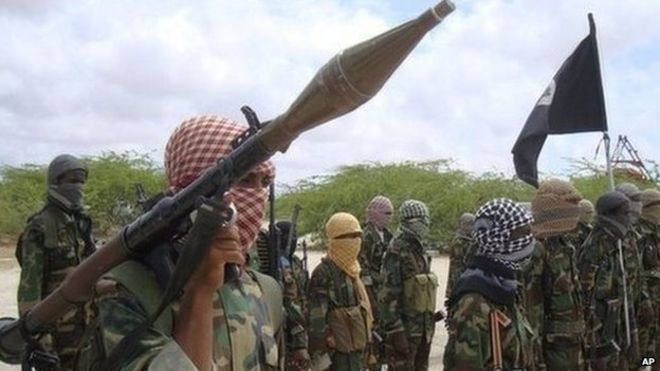 The New York Times reports: “Kenyan fighter jets bombed two training camps of the Shabab militant group in Somalia, defense officials said on Monday, the first military response to the attack on a university last week that killed nearly 150 students.
The New York Times reports: “Kenyan fighter jets bombed two training camps of the Shabab militant group in Somalia, defense officials said on Monday, the first military response to the attack on a university last week that killed nearly 150 students.
“Kenya’s president, Uhuru Kenyatta, had vowed to respond ‘in the severest way possible’ to the massacre at the university.
“Military officials said it was difficult to assess the damage because of heavy cloud cover. Kenya has carried out bombing raids in Somalia after terrorist assaults in the past, and the Shabab militants, knowing what was coming, have often abandoned their camps after major attacks.”
ABDI ISMAIL SAMATAR, samat001 at umn.edu
Samatar is professor and chair of the Department of Geography, Environment & Society at the University of Minnesota. He said today: “The brutality of al-Shabab is simply staggering. Its latest atrocity is the outright killing of over 100 students at Garissa University [in Kenya]. But what people also need to understand is the insidiousness of the Kenyan government and its actions in Somalia, which al-Shabab uses as a pretext to rally people in Somalia.
“If Kenya and the international community are serious about defeating al-Shabaab it can only be done by well resourced professional Somali security forces. The international community has failed to help Somalis build such a force. In addition Kenya and Ethiopia must withdraw their troops from Somalia as well as their efforts to gerrymander politics in that country by supporting certain factions in Somalia. The regime in Mogadishu is hopelessly corrupt and incompetent and can not galvanize the Somali people.
“The international community, including Africans, have been not only oblivious to the plight of the Somali people, but have turned them into a disposable political football since the collapse of their state in 1991. For years the world watched warlord terrorists rape, loot and kill Somalis with impunity.
“The U.S. actually backed the warlords against the Union of the Islamic Courts (UIC), which was trying to bring some stability to the country. In 2005, the UIC defeated the warlords and created peace in Mogadishu for the first time in years and without any help from the international community. Rather than engaging with the UIC, the U.S. and its African clients considered them as terrorists and Ethiopia was given the green light to invade and dismantle it. Ethiopian forces took over Mogadishu on December 25, 2006, and the prospect of a peaceful resurrection of Somalia perished.
“The brutality of the Ethiopian occupation has been documented by human rights groups. Resisting the Ethiopian occupation became the rallying cry for all Somalis. Some of the toughest challengers of the Ethiopian war machine were segments of the UIC militia known as al-Shabab. Their valour endeared them to many Somalis and this marked the birth of al-Shabab as we know it today. Had the international community and particularly the West productively engaged the UIC, I am confident that al-Shabab would have remained an insignificant element of a bigger nationalist movement.
“Kenya’s original rationale for invading Somalia was to protect its citizens and tourist-based economy from al-Shabab’s predations. For many this argument seemed reasonable as al-Shabab was accused of kidnapping several expatriates from Kenya. According to a U.S. official who spoke on condition of anonymity, there were credible reports that the Kenyan government had planned on gaining a strong sphere of influence in the lower region of Somalia long before the al-Shabab-affiliated incidents.”
See Samatar’s piece “The Nairobi massacre and the genealogy of the tragedy.”